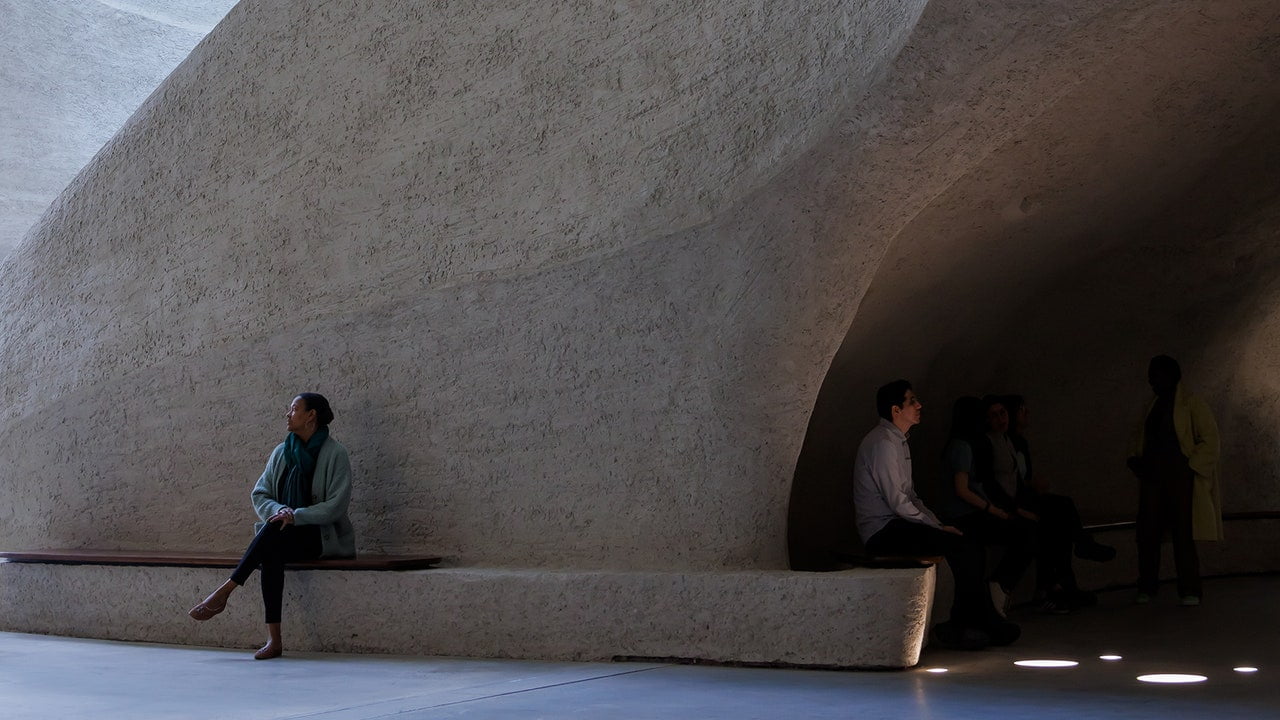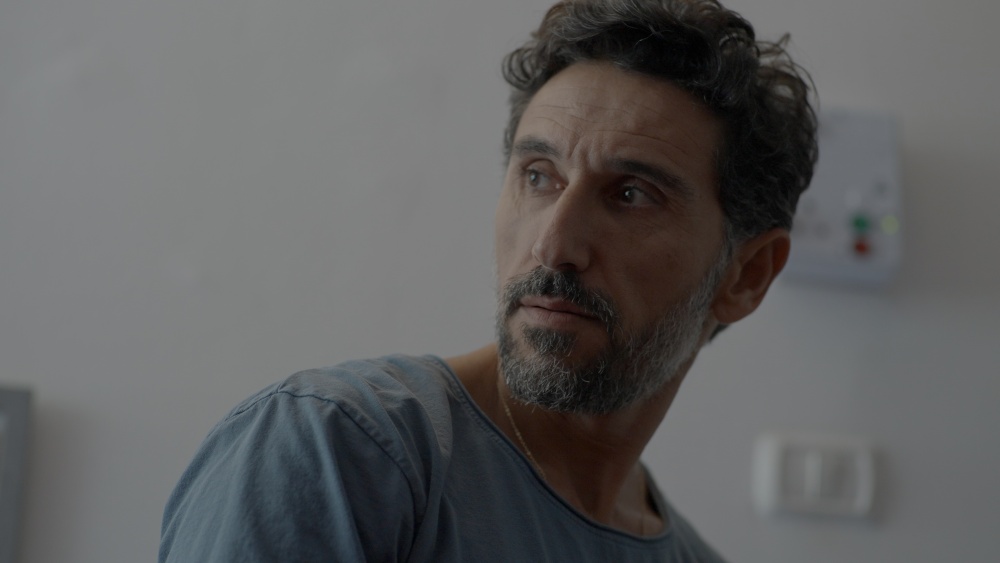A Natural-History Museum for a Post-Truth Age

It is not uncommon to hear the director of a fine-art museum, presiding over the ribbon-cutting for a shiny new wing, declare that its architecture is so pathbreaking that the building itself, far from being a mere container, deserves to be thought of as part of the permanent collection. The architect Jeanne Gang, the lead designer of the new Richard Gilder Center for Science, Education, and Innovation at the American Museum of Natural History, in Manhattan, has given her clients every opportunity to make a similar claim. Here, though, the affinity to the collection flows not from an avant-garde approach, but, as seems fitting for a natural-history museum, a timeworn and elemental one. This new wing is anything but shiny.
The centerpiece of the Gilder Center, which will open to the public on May 4th, is a dramatic cavelike atrium, lined in sand-colored, rough-edged concrete, that soars, dips, and bends through five levels and eighty-three feet of vertical space—a kind of slot canyon for the Upper West Side. The Times, in a pair of articles published when the design was unveiled, in 2015, compared it to Jurassic Park and Dr. Seuss and said that it “evokes the Flintstones’ town, Bedrock.” Beyond Hanna-Barbera, the relevant architectural precedents include Erich Mendelsohn’s Einstein Tower in Potsdam, Germany, of 1921; thin-shell mid-century designs by Félix Candela and Eero Saarinen, as well as Saarinen’s Morse and Ezra Stiles residential colleges at Yale; Le Corbusier’s curvilinear but substantial late-career buildings, in particular his concrete Notre Dame du Haut chapel on a hilltop in Ronchamp, France, completed in 1955; the 2014 Serpentine Pavilion in London’s Kensington Gardens by Chile’s Smiljan Radić, a temporary structure that resembled an oversized dinosaur egg; and the undulating ceiling in the lobby of the 2015 Broad museum, in Los Angeles, by the New York firm Diller Scofidio + Renfro.
If there are any hints in the atrium of the software-powered approach known as parametric design—often the source in recent years of buildings with seemingly turbocharged fluidity—they are slipped beneath an architectural filter set to Stone Age. In fact, the method used to create this moonscape of a room, officially the Kenneth C. Griffin Exploration Atrium, has workmanlike roots, in the construction of swimming pools and subway tunnels. The walls of the atrium, which looks out over Theodore Roosevelt Park and Seventy-ninth Street, are produced using a method called shotcrete, in which concrete is sprayed directly onto rebar and metal mesh, without the need for formwork, and finished by hand before it cures. (Depending on the context, the word shotcrete can refer either to the technique or to the material that the technique produces.) Sometimes trowels are used for the final step; at the Gilder Center, the construction crew used long rods, resembling squeegees, and guide wires attached to the rebar. This allowed them to create not only a rocklike, fossilized texture and complex curves but also the sharp creases found in the canyons that Gang and her colleagues toured in the American Southwest.
According to the American Concrete Institute (motto: “Always advancing”), “Although the hardened properties of shotcrete are similar to those of conventional cast-in-place concrete, the nature of the placement process results in an excellent bond with most substrates, and rapid or instant capabilities, particularly on complex forms or shapes.”
“You can sandblast it smooth,” Weston Walker, a design principal and partner for Studio Gang, the firm that Jeanne Gang founded in Chicago, told me about the shotcrete surface as we stood in the atrium one afternoon last week. “You could even get it to smoothness of precast concrete if you wanted. But”—and this last part seemed superfluous, given what surrounded us—“we didn’t.”
As Gang, Walker, and other colleagues were preparing the design of the new wing, they descended far below Manhattan to observe the construction of the East Side Access project, the M.T.A.’s giant effort to connect the Long Island Rail Road to a new station beneath Grand Central Terminal. There they watched crews spray shotcrete onto rebar on the ceiling, creating a series of vaulted, cathedral-like spaces. There are also connections to shotcrete in the museum’s own history. Carl Akeley, a taxidermist, big-game hunter, writer, and inventor—the history of any natural-history museum is also a history of polymathy—who worked at A.M.N.H. from 1909 to 1926, was the first to figure out how to spray plaster through a nozzle, using a compressed-air technique, which eventually gave rise to shotcrete. Gang told me she wasn’t aware of the Akeley connection when she first considered using this method on the project.
The two-hundred-and-thirty-thousand-square-foot Gilder Center is a microcosm, or, if you prefer, a fractal, of the museum as a whole, in the sense that it holds essentially every kind of space you can find elsewhere in the sprawling A.M.N.H. complex. (Three older structures were removed to make room for it.) The wing contains a half-dozen exhibition spaces (including a “collections core” along its southern edge that opens research and storage spaces to view behind floor-to-ceiling glass), eighteen new and renovated classrooms, two shops, a ticketing and visitor-services area, a stunning and high-ceilinged library, and, beneath a honeycomb light fixture, the museum’s only table-service restaurant, the Restaurant at Gilder, which has beer and wine on tap. It also features the “Invisible Worlds” immersive experience, presented in an oval-shaped venue with a mirrored ceiling, where the story of the planet and its organisms is narrated on a twelve-minute loop. This room is impressive enough in the quality of its digital imagery to make you wonder how long architecture, so slow-footed and earthbound by comparison, can compete with technology for the attention of visitors.
At least Gang is willing to try. Indeed, the drama of the atrium, its very scale and geological sweep, gave the architect a way to address one of the most ambitious goals for the project as articulated by Ellen V. Futter, who presided over the museum for three decades until stepping down last month. (Her successor is Sean M. Decatur, the former president of Kenyon College.) Futter, from the start, hoped to use the Gilder Center to counter growing evidence of what she called the “denial of science.” The need for that campaign only seems to have intensified after Donald Trump won the Presidency. In a 2017 news conference announcing updates to Gang’s design, Futter said: “In a post-truth world, understanding science has never been more urgent.”
This raises the question, of course, of what specific role architecture can play in bolstering or backstopping science, or in creating a new museum wing robust enough to meet our fraught political, ecological, and cultural moment. Gang—whose firm collaborated on the project with the exhibition designer Ralph Appelbaum Associates, the landscape architecture firm Reed Hilderbrand, and, as executive architect, with Davis Brody Bond—imagined that one way might be to install charismatic, cutting-edge exhibits within an architectural envelope that is itself a spectacle. The goal was to demonstrate that nature is awe-inspiring, yes—but also that the quest to understand and document it might bring us closer to the wellspring of that awe.
The only other museum I know of that uses shotcrete in its public spaces is the 2010 Holocaust Museum L.A., formerly the Los Angeles Museum of the Holocaust, by the architect Hagy Belzberg. In that project, the match between material and mission—between the fluid, changeable, and expedient character of the shotcrete and the goals of the museum, to fix in memory among the darkest of human histories—is jarring. The fit is far better in Gang’s design. The rough openings in the atrium’s sidewalls resemble portholes but also cave entrances, the insides of blood vessels, and the eyes and mouths of otherwise unseen creatures. Thanks to a number of large skylights, the play of light and shadow across the space is exquisite. Sure, the shotcrete—a tricky and unpredictable material to wrangle—looks patchy in a small handful of locations. Yet, in an age when every expanding cultural institution seems to be adding a new building made of glass and steel, or, increasingly, with giant, exposed mass-timber beams, a sculptural atrium marked by a kind of lunar strangeness is a welcome change.
For Gang and her colleagues, this effort to fend off “post-truth” attacks on science was just the first part of what turned out, in architecture and urban-design terms, to be a three-front war. The second and in certain ways most complex front was in Theodore Roosevelt Park (né Manhattan Square) outside, where some neighbors worried that the new wing would impose too dramatically on this relatively small but leafy and intensely well-used stretch of green space along what has long felt like the back side of the museum, along Columbus Avenue. One of the neighborhood groups, Landmark West!, included an ominous-sounding quote from Roosevelt, rather wrenched out of context, on its Web site: “No man is justified in doing evil on the ground of expediency.”










